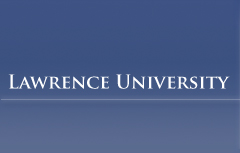Document Type
Honors Project
Publication Date
5-29-2019
Abstract
American ginseng (Panax quinquefolius) is an herbaceous plant found in the eastern United States and Canada. Due to the high demand for ginseng roots on the Chinese market, it has been harvested at unsustainable rates. If this continues, overharvest along with other environmental factors will lead it to become extinct in the wild. American ginseng became popular due to its similarities with Asian ginseng, (Panax ginseng), a related plant that has been used in Chinese medicine for hundreds of years. Since there is so little Asian ginseng left in the wild, American ginseng now helps satisfy the demand for wild roots. Due to differences in appearance, wild ginseng roots are highly valued over cultivated ginseng. Despite the establishment of the cultivated ginseng industry, the demand for wild roots remains high. As China’s middle and upper classes grow, the demand for these expensive roots increases even more. Meanwhile, the poor economy of the Appalachian region leads more people to harvest ginseng, legally or illegally, as a second source of income. Encouraging the use of wild-simulated ginseng may be one way to reduce the rate of harvest of wild roots.
Level of Honors
cum laude
Department
Environmental Studies
Department
East Asian Studies
Advisor
Alyssa Hakes, Brigid Vance
Creative Commons License

This work is licensed under a Creative Commons Attribution-NonCommercial 4.0 International License
Recommended Citation
Wulfsberg, Margaret, "An Overview of American Ginseng through the Lens of Healing, Conservation and Trade" (2019). Lawrence University Honors Projects. 147.
https://lux.lawrence.edu/luhp/147
The Story of American Ginseng by Margaret Wulfsberg
Included in
Alternative and Complementary Medicine Commons, Botany Commons, Environmental Studies Commons, Social and Cultural Anthropology Commons, Terrestrial and Aquatic Ecology Commons

Comments
The booklet, added as supplemental material, is available for use under the Creative Commons License: Attribution-NonCommercial, CC BY-NC